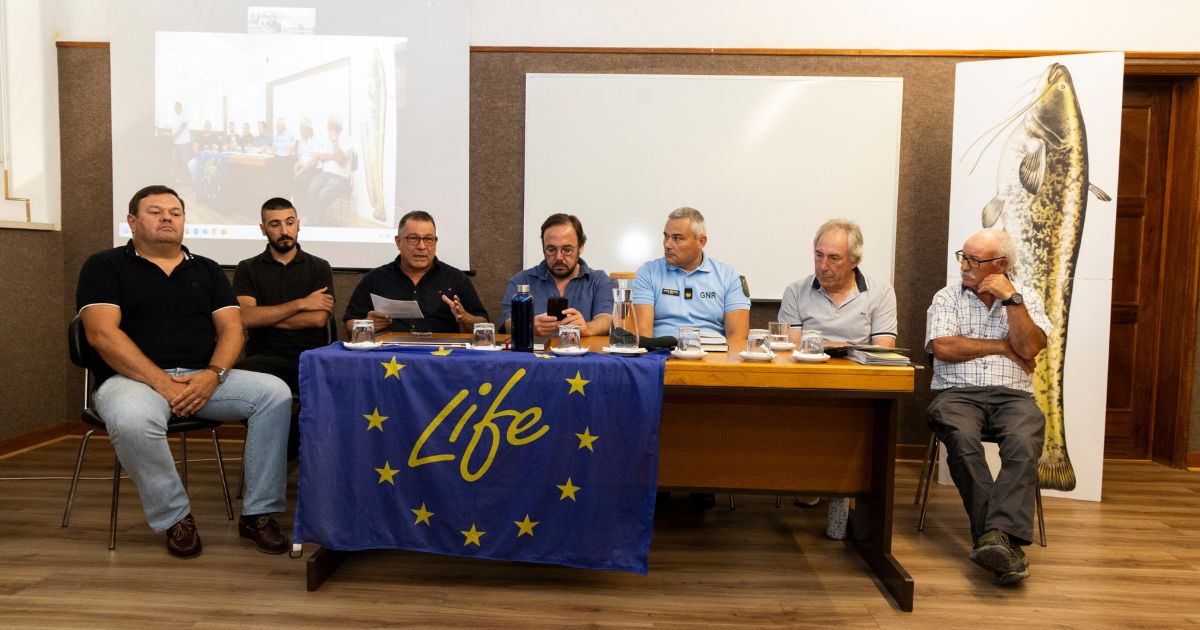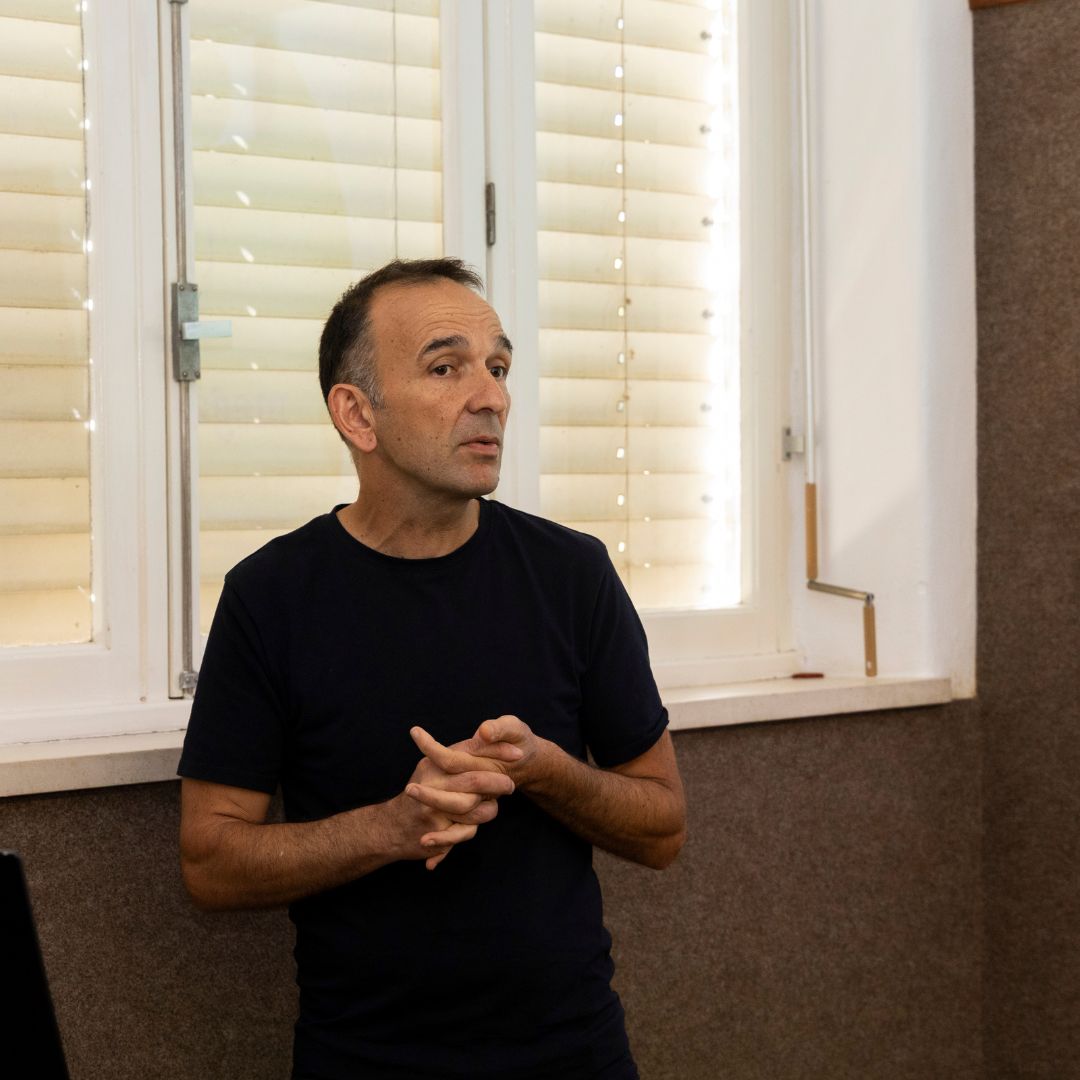Siluro in the Tagus: results, management and flavors at the close of MEGAPREDATOR
On June 26, Amphitheatre 2 of the Escola Superior Agrária de Santarém (ESAS) hosted the closing workshop of the MEGAPREDATOR project - A giant in the water: from predation effects to population control of the European catfish (Silurus glanis). During the morning, researchers, natural resource managers and local entities shared the main results and debated ways to contain this large non-native predator that is already worrying riverside communities and management authorities.
The opening session was led by the Vice-Director of ESAS, Igor Dias, followed by a presentation of the main results of the project, coordinated by Filipe Ribeiro, a researcher at MARE/ARNET. Among the topics highlighted were the feeding and activity of the Siluro, its reproduction, and fishermen's perceptions of the presence of this large predator in the river ecosystem.
“With the MEGAPREDATOR project, we learned more about the biology of this exotic predator in the Tagus basin, whose characteristics enhance its invasive nature,” explains João Gago, a researcher at MARE/ARNET and Adjunct Professor at ESAS. "We confirmed its significant predation pressure on native species of high commercial and conservation value such as shad, eel and sea lamprey, among others, mainly in the lotic section of the lower Tagus. We also assessed its activity pattern and movements, finding that it is active throughout the year, especially at night, during which time it makes several attacks on its prey."

The earlier and longer breeding season in the Tagus, compared to the species' region of origin, was another of the data points highlighted at the workshop. These attributes confirm, according to the researcher, that controlling the species is essential to mitigate its impact on biodiversity and river ecosystem services. To this end, the project evaluated different catching techniques and relied on the collaboration of professional fishermen, who showed openness to actively participating in the population control of the European catfish.
The team at the workshop, which also included researchers Mafalda Moncada, Diogo Ribeiro, Beatriz Castro, Christos Gkenas and Rui Rivaes, worked closely with recreational and professional fishermen, assessing not only their perceptions and behavior in the face of the species' presence, but also their willingness to take part in removal programs.
“All the results obtained were shared with the management authorities, such as ICNF and GNR-SEPNA, especially during the project's final workshop, so that together we can work in a more informed way to manage the species,” says João Gago. “It became clear that there will have to be more effective monitoring by the GNR-SEPNA, as well as possible adaptations to the fishing law, such as allowing night fishing or the use of live bait, in order to boost catches of the species.”

The program also included a round table dedicated to the management of this invasive species, with the participation of Sérgio Tente (recreational fisherman), Márcio Duarte (ICNF technician), Rodrigo Castelo (Chef), João Lobo and Carlos Serras (professional fishermen), Sergeant Marques (GNR/SEPNA Santarém district command) and moderated by João Baptista, a journalist from the regional digital newspaper “Mais Ribatejo”.
Finally, there was time for a tasting of dishes made with European catfish, prepared by Rodrigo Castelo, a chef from Escalabia who is known for his appreciation of river gastronomy. The menu was designed to pave the way for promoting the consumption of the species as a complementary management strategy.
“The use of the species for human consumption will be fundamental to enhancing the species as a resource and giving the catches a noble purpose,” argues the researcher. "Strategies to promote consumption, such as its presence at river fish festivals or in local restaurants, have been developed throughout the project, but always with care to warn of the dangers of new introductions. In other words, we must boost the consumption of the species in the Tagus River, but prevent this feeding interest from giving rise to new translocations."
The project demonstrated how applied research can respond to emerging conservation challenges in Portuguese freshwater ecosystems.
MEGAPREDATOR was funded by the Foundation for Science and Technology (FCT) and developed between 2022 and 2024, culminating in the presentation of results in 2025, and involved MARE-ULisboa, the Center for Ecology, Evolution and Environmental Change (CE3C-FCUL) and the Center for Statistics and Applications (CEAUL-FCUL), It was supported by the Portuguese Environment Agency (APA), the Institute for Nature Conservation and Forests (ICNF), the Portuguese Sport Fishing Federation (FPPD), the Póvoa de Santa Iria Avieiros Cultural Association, the Alhandra Fishermen's Association - Rios e Marés, the Amigos das Caneiras Association and the Médio Tejo Intermunicipal Community.
